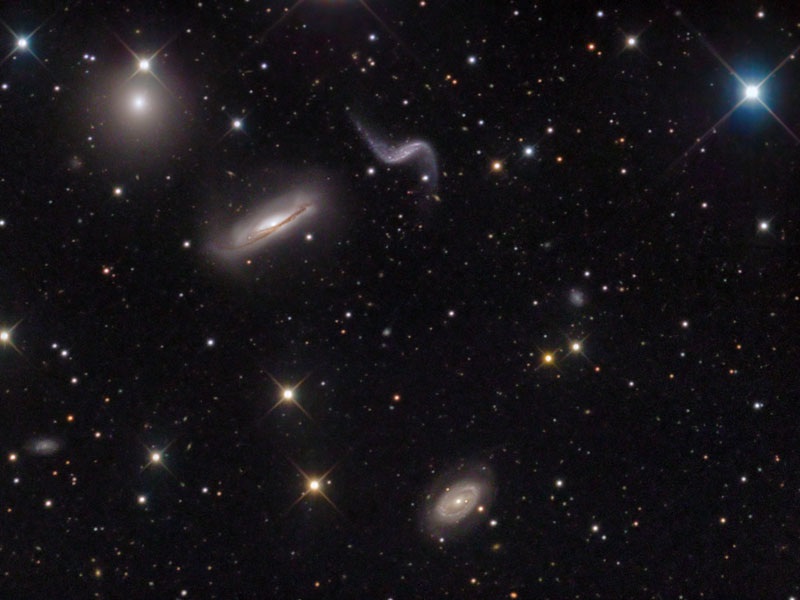
|
Credit: MASIL Imaging Team
Explanation:
Galaxies, like stars, frequently form groups.
A group of galaxies is a system containing more than
two galaxies but less than the tens or hundreds typically found in a
cluster of galaxies.
A most notable example is the Local Group of Galaxies, which
houses over 30 galaxies including our
Milky Way,
Andromeda, and the
Magellanic Clouds.
Pictured above is nearby compact group Hickson 44.
This
group is located about 60 million
light-years away toward the constellation of Leo.
Also known as the NGC 3190 Group,
Hickson 44
contains several bright spiral galaxies and one bright
elliptical galaxy on the upper
left.
The bright source on the upper right is a foreground star.
Many galaxies in
Hickson 44 and other compact
groups are either slowly merging or
gravitationally pulling
each other apart.
|
January February March April May June July August September October November December |
| ||||||||||||||||||||||||||||||||||||||||||||||||
NASA Web Site Statements, Warnings, and Disclaimers
NASA Official: Jay Norris. Specific rights apply.
A service of: LHEA at NASA / GSFC
& Michigan Tech. U.
Based on Astronomy Picture
Of the Day
Publications with keywords: galaxies - group of galaxies
Publications with words: galaxies - group of galaxies
See also:
